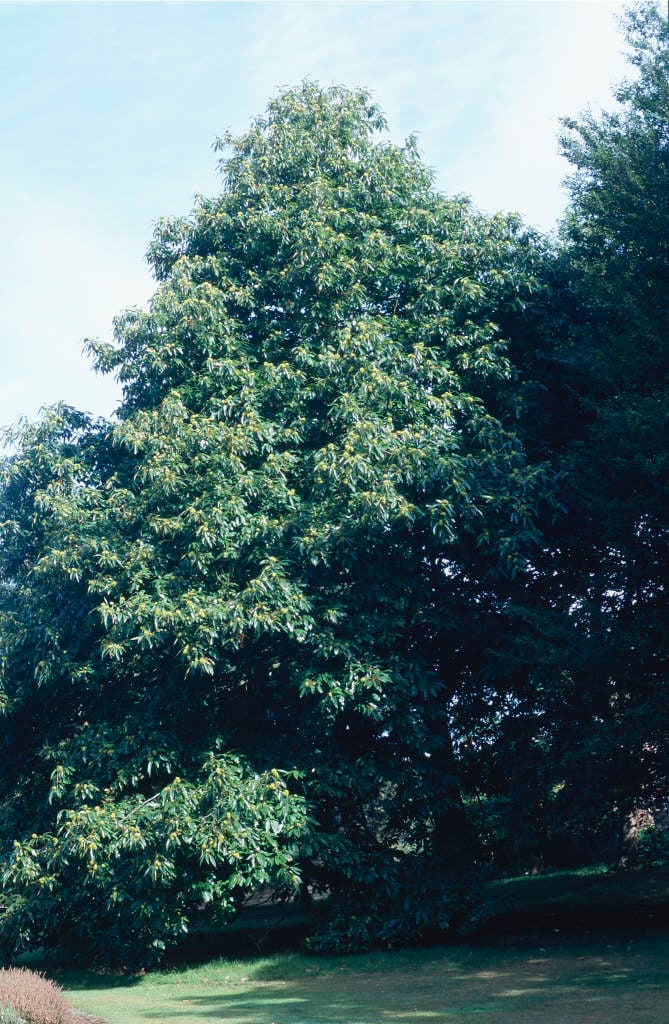Castanea sativa
sweet chestnut
A large vigorous deciduous tree with rugged, grooved bark and glossy, serrate, oblong-lanceolate leaves to 20cm in length. Male catkins to 15cm in length, yellowish, followed by spiny fruits containing edible nuts
Other common names
common chestnutEurasian chestnut
see moreEuropean chestnut
Sardian nut
Spanish chestnut
castanwydden
Synonyms
Castanea vescaCastanea vulgaris

Buy this plant
Size
Ultimate height
Higher than 12 metresTime to ultimate height
20–50 yearsUltimate spread
Wider than 8 metresGrowing conditions
Moisture
Well–drainedpH
Acid, NeutralColour & scent
| Stem | Flower | Foliage | Fruit | |
| Spring | Brown | |||
|---|---|---|---|---|
| Summer | Yellow | Brown | ||
| Autumn | Green Brown | |||
| Winter |
Position
- Full sun
Aspect
South–facing or North–facing or West–facing or East–facing
Exposure
Exposed or ShelteredDrought resistance
Yes Hardiness
H6Botanical details
- Family
- Fagaceae
- Native to GB / Ireland
- Yes
- Foliage
- Deciduous
- Habit
- Spreading branched
- Genus
Castanea are fast-growing and large deciduous trees or large shrubs, with long, toothed leaves and conspicuous yellow catkins followed by spiny fruits
- Name status
Correct
- Plant range
- S. Europe, N. America, SW Asia, N. Africa
How to grow
Cultivation
Grow in well-drained soil in full sun
Propagation
Propagate by seed or grafting
Suggested planting locations and garden types
- Architectural
Pruning
Pests
Generally pest-free
Diseases
May be susceptible to phytophthora, leaf spot, chestnut blight and honey fungus
Love gardening
Sign up to receive regular gardening tips, inspiration, offers and more
View our Privacy Policy
Get involved
The Royal Horticultural Society is the UK’s leading gardening charity. We aim to enrich everyone’s life through plants, and make the UK a greener and more beautiful place.